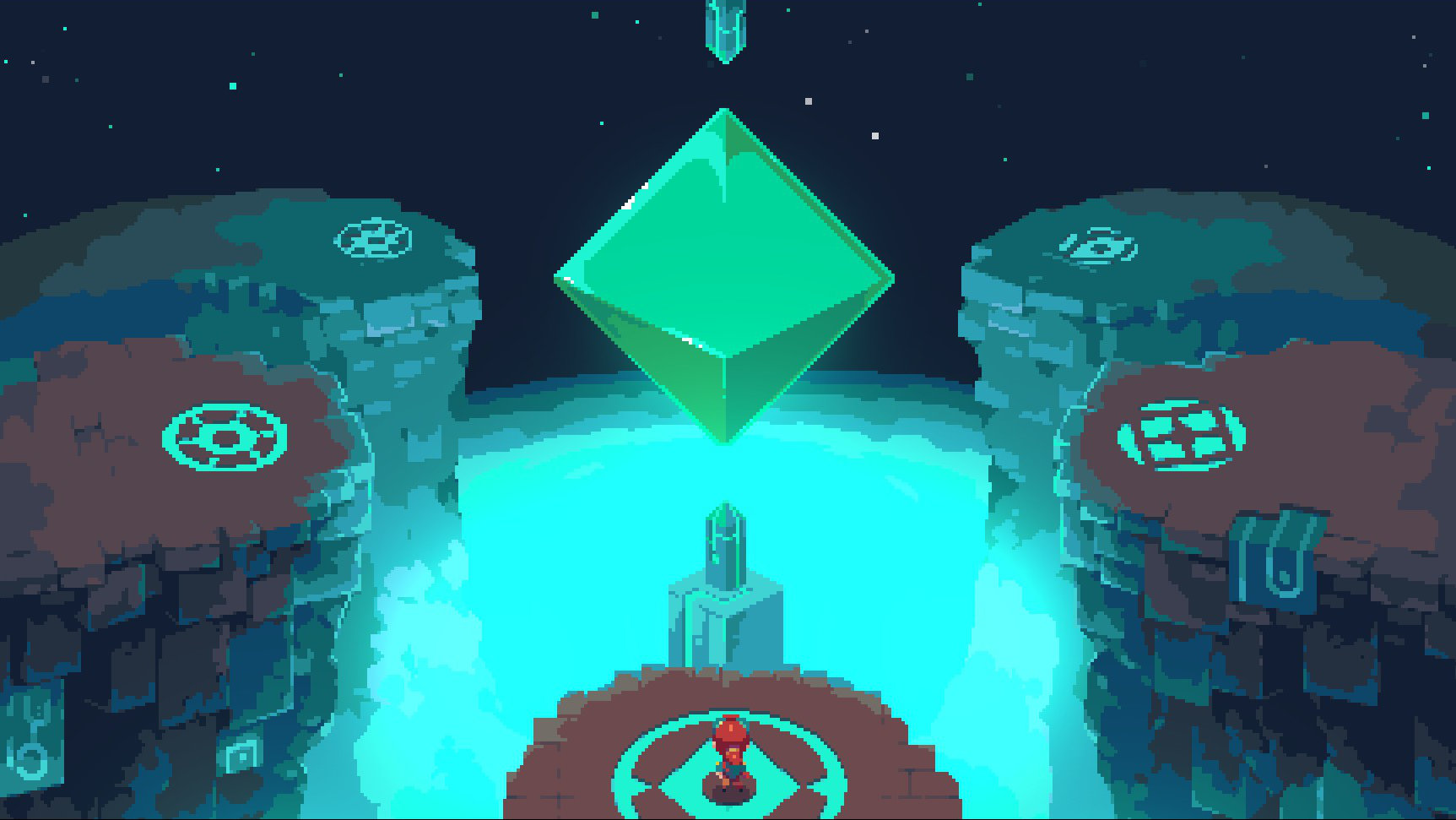Sparklite Review
A brief, warm, nostalgic hug.

Accessibility is unfairly perceived as a needlessly dirty word in some parts of gaming culture, but Red Blue Games aren’t afraid to bring something new to the top-down action-adventure formula. Rather than create yet another pixel-art, top-down, indie rogue-lite they’ve taken the single element of map randomisation and applied it to a genre laden with nostalgia to create Sparklite, a new take on a classic formula that lacks a bit of longevity.
You play as Ada, an adventurer seeking to end the planetary threat of the moustache endowed Baron, who is looking to consume all of Geodia’s natural resources in the form of the titular mineral, sparklite. In short, it’s more FernGully than An Inconvenient Truth.
That’s probably for the best, as the tone Sparklite aims for is more like a cozy hug wrapped in nostalgic blankets than anything else. Any image of Sparklite is likely to conjure up memories of Legend of Zelda Gamecube-era titles like Wind Waker and Minish Cap, with an endearing, if slightly repetitive soundtrack that hearkens back to the early 2000s.

It feels like you’re playing around in the overworld of a 2D Zelda game; there are caves to explore, secrets to find, items to collect and a variety of biomes and enemies that will give you trouble. Each biome feels incredibly vibrant and alive, from the swaying grass to the morphing swamp mushrooms, with monsters so cute it seems a shame to whack them with your wrench.
The bulk of Sparklite is travelling to each biome, defeating its resident ‘Titan’ boss, and collecting as much sparklite as possible. If you fall during a run you’ll be sent back to your hub town The Refuge where you can spend your hard-earned sparklite to upgrade your gadgets, buildings and passive ‘badges.’
Each map is randomly generated in each playthrough, and the only penalty for death is a reshuffled map and dropped consumables. Because this is the only rogue element in Sparklite, it’s structured more like a 2D Zelda title than a typical rogue-lite.

New locations like vaults and boss mines are marked on your map permanently, and most locations containing secrets will turn up on your next run. The downside here is that there isn’t a lot of variety to shake up your playthrough, meaning Sparklite is a rather short experience even if you collect everything.
Combat is a mixture of close-quarters wrench swinging, ranged gadget weapons and consumable items like bombs and medkits. By charging an attack, Ada can turn her wrench into a hammer that can stun enemies and quickly defeat them. The basic attacks connect with satisfying thuds, and the overall impacts of combat feel solid. Unfortunately, the other tools in Ada’s arsenal don’t feel as useful or easy to use as the wrench.
Gadgets are obtained from vaults, one-off puzzles designed to teach you to use them and rewarding you with a schematic that you can then research in The Refuge. There isn’t a lot of variation between gadgets, most of which are some form of straight-firing projectile weapon tied to your energy meter. More often than not, I found using the wrench and hammer to be far more effective for defeating enemies.

Patches are passive bonuses that are found in almost every corner of Geodia and slotted into a kind of inventory system in the medical centre. Health patches add extra hearts to your life pool and are the most abundant, but there are unique patches that reveal maps, increase damage and recycle consumables. Identical patches can also be fused together for a small fee to create a more powerful version, freeing up space for even more patches.
It’s a fun idea to play around with but I wish the patches weren’t all passive effects. More build-defining patches would bring much more variety to combat and is something that could be added later down the line.
Wingnut is Ada’s robot sidekick that doubles as Sparklite’s local co-op second player. It’s not a substantial co-op option, however, as Wingnut is relegated to digging up sparklite, cleaning muck and lighting dark caves. This is partly by design; Red Blue Games clearly wanted a co-op option for much younger players to be able to use.

Aside from a few small bugs like some enemies not playing sound, the game feels polished. But Sparklite’s biggest hurdle is its longevity. After around six hours, I was able to finish the game and see most of what it had to offer, and there is little replayability post-credits. All bosses aside from the final showdown with the Baron can only be tackled again on a new save, which feels like a wasted opportunity.
Sparklite’s difficulty is going to depend largely on how quickly you push into new areas and bosses, but ultimately, it will be an easy game if you’re a seasoned player. Games don’t need to be brutally difficult, but it should be noted that Red Blue Games have made a game perfect for younger audiences or people new to video games. Some enemies can be challenging but there are some that will simply wander in circles posing no threat to the player. Bosses tend to repeat the same pattern of movement without changing phases, so if you’re cautious you’ll have no trouble.

I enjoyed my short time with Sparklite but I’ve been left wanting more. It will be a good fit if you’re after a game to dip in and out of over time, especially on the Switch. Red Blue Games have achieved everything they’ve set out to do. Next time, they should shoot for the stars.
[Reviewed on PC]
